

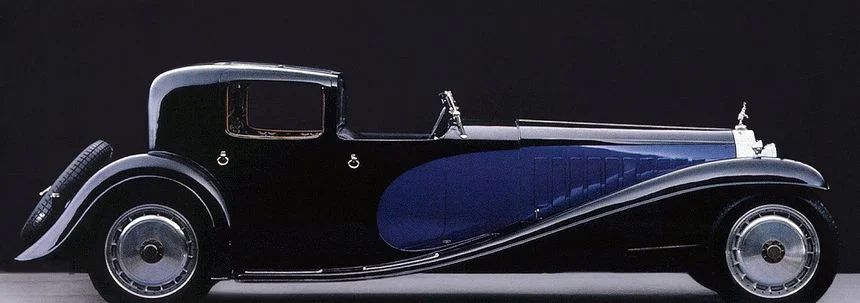
|
December 21, 2022 From Autovisie.nl Bugatti is no longer owned by the Volkswagen Group. The Croatian electro pioneer Mate Rimac holds sway there. He spoke to Autovisie about the future of Bugatti. The most remarkable news: Rimac wants the aristocratic Bugatti Royale back. According to Mate Rimac, it is not difficult to distinguish between Bugatti and Rimac. “Rimac is very geeky. Young, crazy and wild. Bugatti is more about heritage. It is an aristocratic brand. You're not a hooligan or a drug lord if you drive around in a Bugatti. A Bugatti is also more analogous, like a Swiss watch.”
Ten-years plan for Bugatti
V10 for Chiron successor “The successor to the Chiron will be completely new, every nut and bolt. That may not be the most efficient way of developing a car, but yes… I am a perfectionist. Besides, I don't want to spend my life building on something that already exists.”
New Bugatti Royale Seven copies of the Royale were built between 1927 and 1933. The model was almost 6.5 meters long and weighed more than 3100 kilograms. Ettore Bugatti hoped to sell twenty-five, but the global recession prevented that. He used the engine from the Royale for a new locomotive for the French railways and still managed to make a profit on the project.
|

|
December 11, 2022 Next modern Bugatti a Hybrid
The replacement for the Bugatti Chiron will be produced in Molsheim in 2026, and it will be hybrid. Rimac, a Croatian shareholder in Bugatti since 2021, will participate in the development of the French brand's first hybrid car. The historical Alsatian site of Molsheim, which will benefit from a real estate extension, is reinforced by the owner. Bugatti is fine. Bought from Volkswagen by the Croatian electric car supplier and manufacturer Rimac (55% of the capital), associated with Porsche (45% of the capital) since October 2021, the Alsatian manufacturer has taken advantage of a favorable economic situation to prepare for its future. The W16 Mistral roadster, which will be produced between 2024 and 2026, will mark the end of the brand's internal combustion engines. Ultimate evolution of the Chiron (500 units since 2016), the W16 Mistral will be manufactured in 100 units. Premiering in August 2022, the entire series sold out in one day.
|
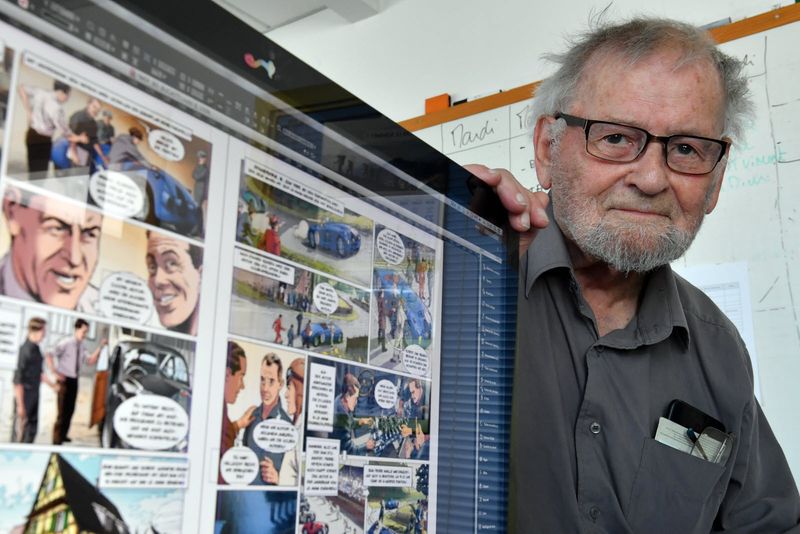
|
December 4, 2022 Obituary: Paul Kestler
It is with great sadness that we have to inform you that one of the most remarkable persons in the Bugatti world, Paul Kestler has passed away yesterday. As we have seen over the last few years, his health was declining, still he was present at the last Festival in September. He also received an honorary citizenship of the city of Molsheim at that occasion, at the respectable age of 92. Paul Kestler was Co-founder of the Enthousiastes Bugatti Alsace and their annual Festival Bugatti, he was one of the leading organisers of the unforgettable Centenaire Bugatti, and of course wrote many books about the Marque. Besides the "Evolution of a style" book, and the one on the Royale, quite recently (in 2019) a comic book with the Bugatti history (photo above shows Paul besides the almost ready pages) appeared, after a script written by Paul and Monique. Paul will be much missed, and we wish his family, and especially his daughter Monique, a lot of strength with their loss. Next Festival will be very strange without him....
|
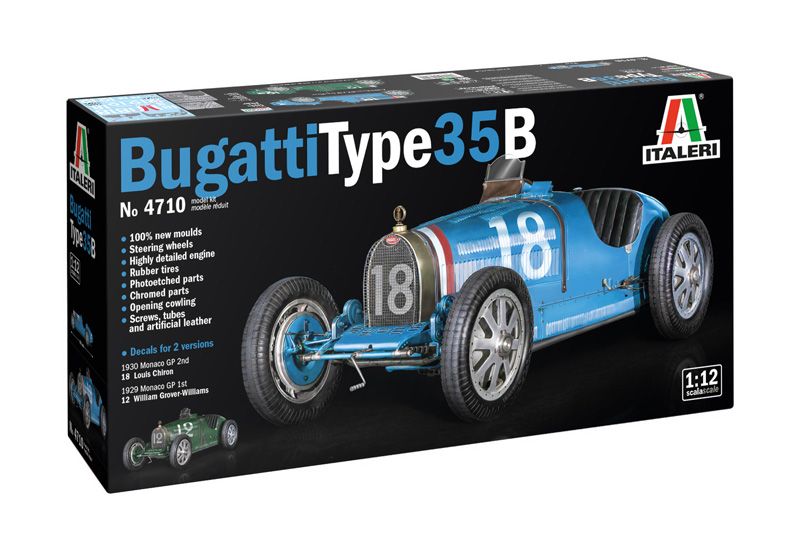
|
December 4, 2022 New plastic model kit: Bugatti T35B by Italeri in 1:12 scale
Those of you interested in miniature models, will know that no plastic model kit of a Bugatti automobile has appeared in the last decades. Especially those who started off their carreers as Bugattistes building plastic model kits, like me, know that there have been resin kits, or white metal kits, but no plastic model kits for the last many years. In the old days, there were several, for example the T35's from Monogram and Airfix, a T59 from Matchbox, of course the T50T from Heller, a Royale Weinberger from Lindberg (later Revell) and of course the two Royale's from the Italian Italeri. Recently, an impressive kit was released by Italeri, in a large scale (only Pocher's T50T was bigger in it's 1:8 scale), and apparently quite detailed. It costs around 160 euro, serious money, but not too expensive. Some info from Italeri:
The Bugatti Type 35 is one of the most iconic and revered racing cars in motor racing history, both technically and competitively. Ettore Bugatti's masterpiece was a unique mix of engineering skill, design, elegance, speed and its relatively light weight. Produced during the 1920s, it won an incredible number of races in both “road” and “on track” competitions. The Bugatti was in fact specifically designed for the world of racing, which included the introduction of technical and mechanical solutions for the car that made it ideal for the racing circuits of the period. Aesthetically, it was universally known and recognizable by the unmistakable shape of the horseshoe-shaped radiator which was a key design feature of Bugatti as a car manufacturer. Due to its 2,263 cm3 8-cylinder engine with a four-speed mechanical gearbox and equipped with a volumetric compressor, the Bugatti Type 35B was able to attain a top speed of 210 km / h. It was produced in limited numbers until 1930. |
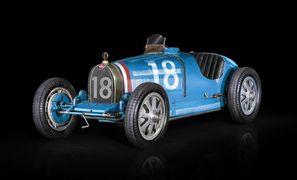
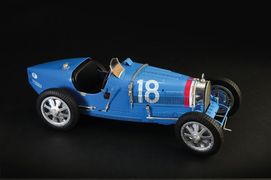
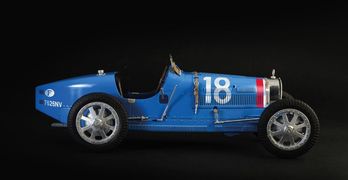
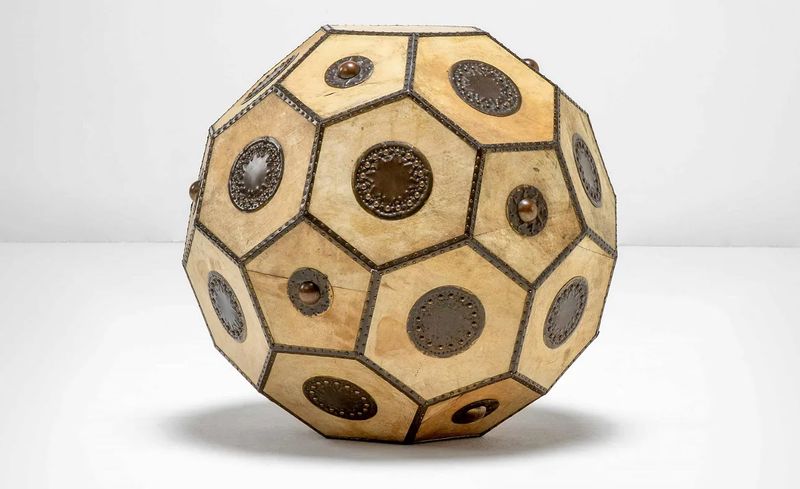
|
November 25, 2022 Unique Carlo Bugatti Icohexahedron
I have not seen anything like this before, Carlo Bugatti continues to amaze with unique and sometimes absurd designs, like this solid archimedean icohexahedron. It is built up of hexagons and pentagons, and is of wooden structure, with parchment coverings and embossed copper elements, usual construction for Bugatti Sr. This special object is signed with dedication and was made in Italy around 1900, It measures 52 cm in all directions. It was on auction in Italy by the auction house Cambi Casa D'Aste, and sold for 5000 euro. There were 8 more Bugatti items in the same auction, which are the regular Carlo Bugatti designs, chairs, tables, mirrors and other funiture.
|
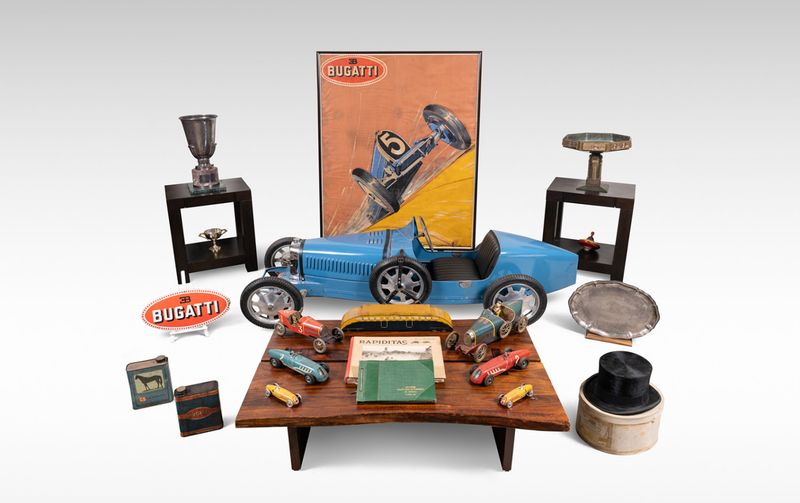
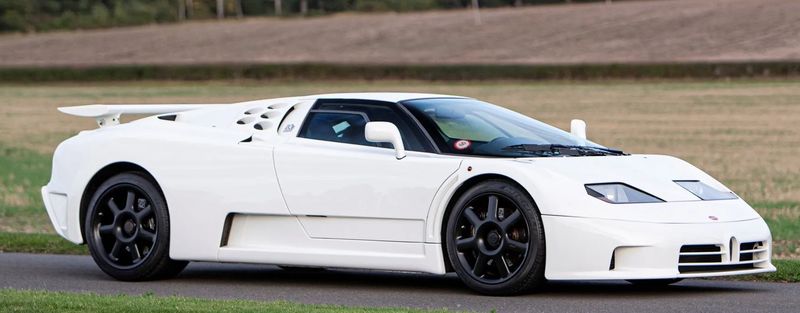
|
November 8, 2022 RM Sotheby's Auction, Marlborough House, London, November 5, 2022
|
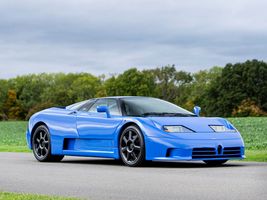
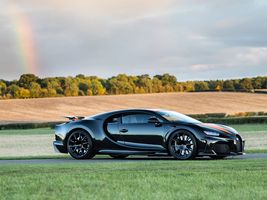
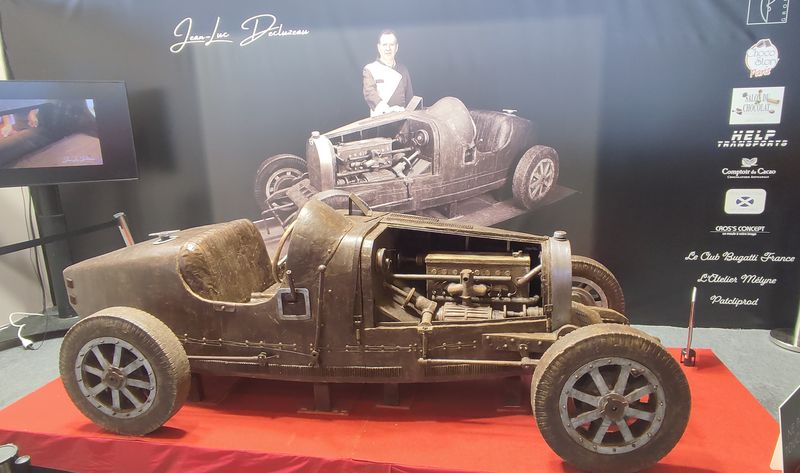
|
October 31, 2022 Bugatti Type 35B at the Salon du Chocolat My friend Dominique Mathern from Straatsburg was at the Salon du Chocolat this past weekend, and was surprised to see this Bugatti there, made of 380kg of Chocolate! The Bugatti was made by Maitre Chocolatier and Sculptor Jean-Luc Decluzeau, he needed 400 hours to make it, at 2.8 meters long and 1.1 meters wide, it is in 3/4 scale. The 27th Salon du Chocolat is the world’s largest event dedicated to chocolate and cocoa, and takes place from October 28 to November 1, 2022. During 5 days at the Porte de Versailles, there are spectacular (fashion) shows, live demonstrations, fun animations and prestigious competitions. |
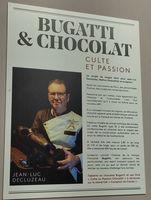
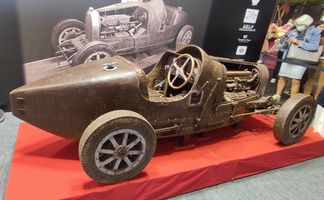
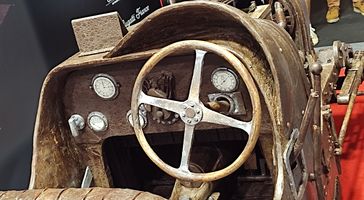

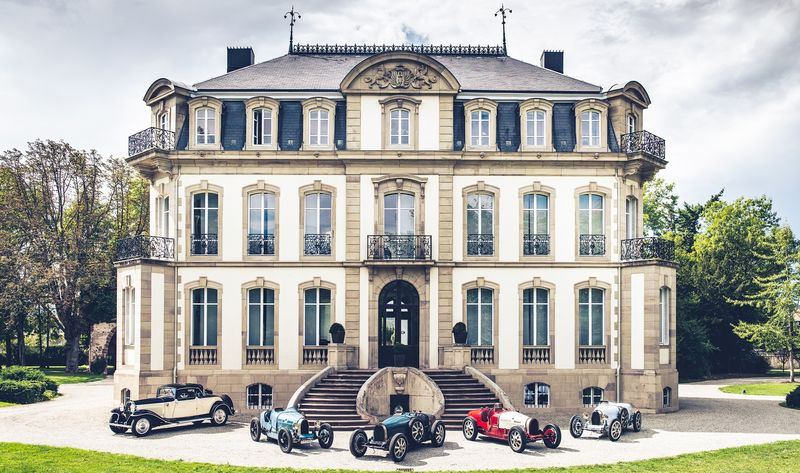
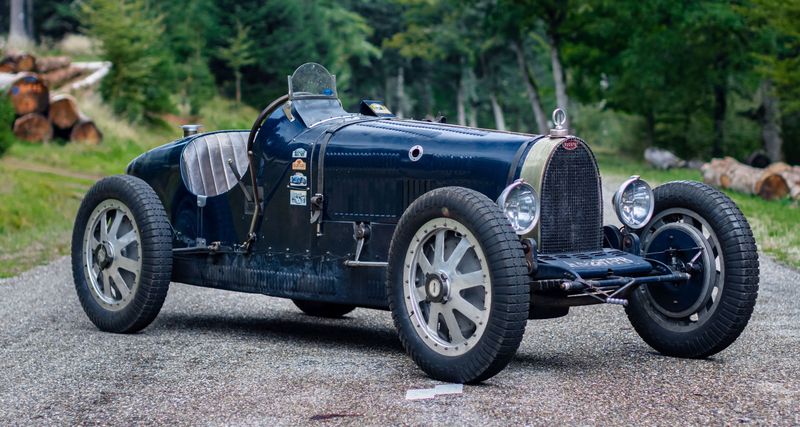
|
October 22, 2022 Artcurial Auction, Automobiles sur les Champs, October 16, 2022
|

|
October 17, 2022
We congratulate the finalist, and of course hope they will each win their category! The Bugatti Trust already won the Historic Motoring Award in the categories Museum of the year and Car of the year, in 2019! The star-studded Historic Motoring Awards 2022 ceremony will take place on Wednesday 16 November at a spectacular new venue, The Londoner in the heart of the capital’s West End. The finalists for each category have been announced, and the winners will be presented at the Awards in November. Top picture: The Bugatti Owners Club and the Bugatti Trust both present at Ivan Dutton's stand at Retromobile, 2019. More info and voting, in some of the categories only.... |

|
October 14, 2022 Bonhams Auction, The Zoute Sale Belgium, October 9, 2022
|
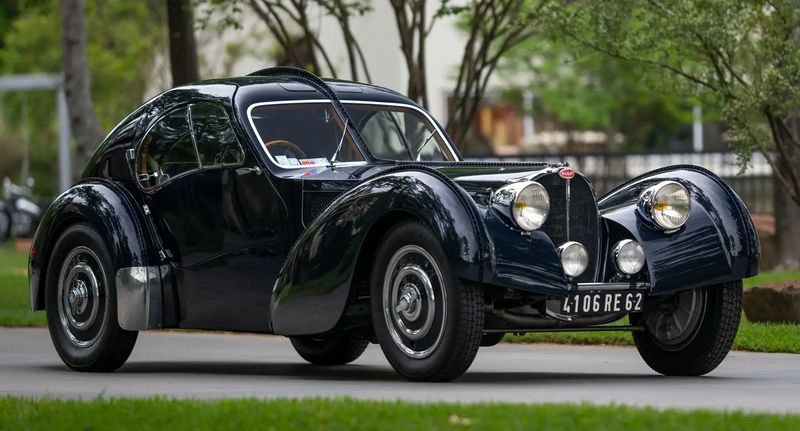
|
October 2, 2022 RM Sotheby's auction, the Gene Ponder collection, September 22 - 24, 2022
Baby Bugatti and automobilia-results
|
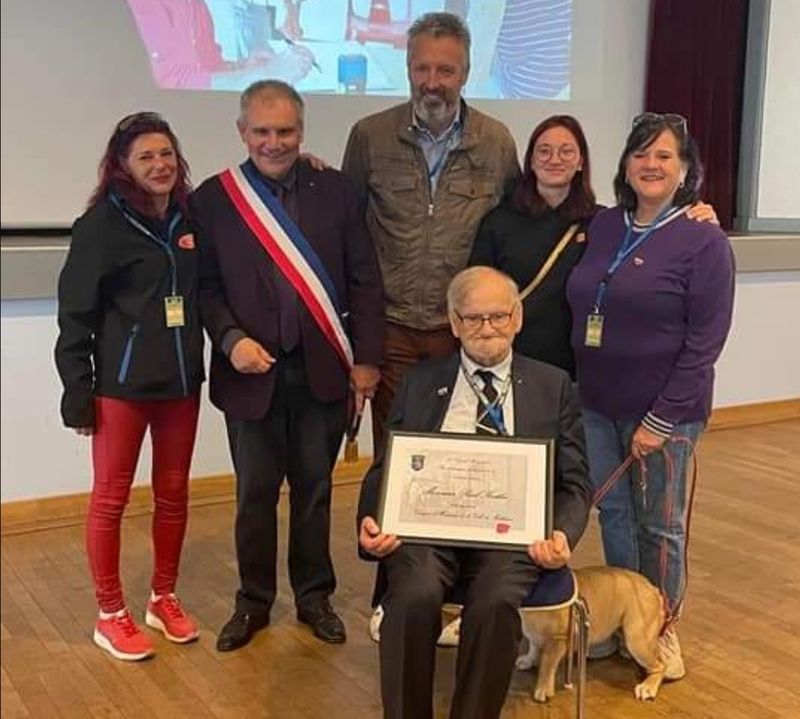
|
September 25, 2022 During the annual Bugatti Festival last weekend in Molsheim Paul Kestler, now 92 years old, was awarded Honorary Citizen of Molsheim in the presence of Michel Bugatti and many friends of Paul and la marque. Paul Kestler has researched the evolution of coachwork style of Bugatti, is a Co-founder of the Enthousiastes Bugatti Alsace and their annual Festival Bugatti and was one of the leading organisers of the unforgettable Centenaire Bugatti. Besides the "Evolution of a style" book, and the one on the Royale, quite recently (in 2019) a comic book with the Bugatti history (also in English) appeared, after a script written by Paul and Monique. May he have many more years surrounded by his supporting family, especially his daughter Monique. |
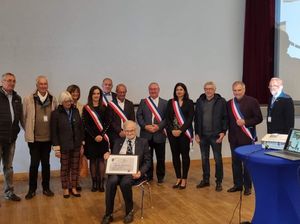
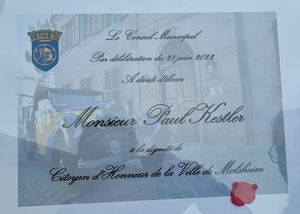
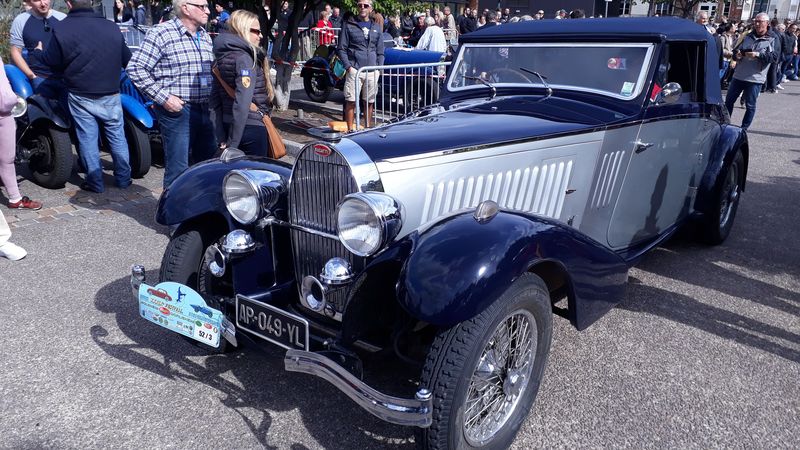
|
September 25, 2022 During the annual Bugatti Festival last weekend in Molsheim, as always awards were given for the most special, most beautiful and other cars. The winners were:
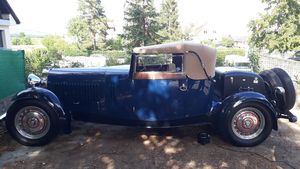
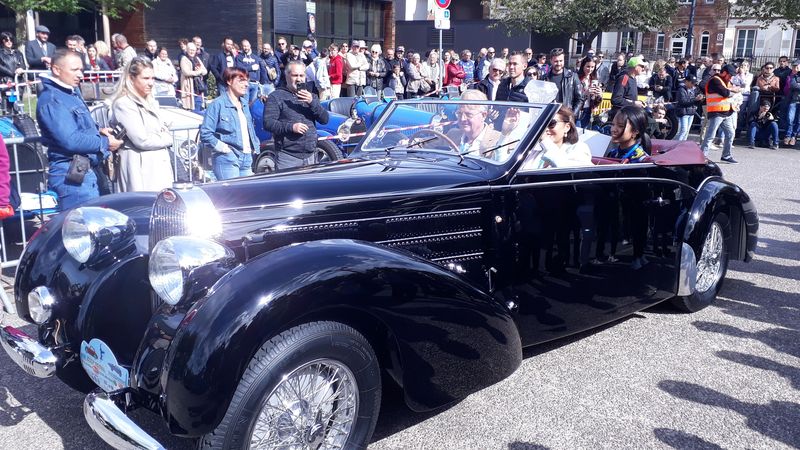 During the morning, the cars were displayed for adoring Bugatti enthusiasts from near and far to admire. Local Molsheim residents also enjoyed a closer glimpse of the Bugattis. In the afternoon, the cars were paraded through the streets of Molsheim, before halting to be judged by a panel of experts that included Christophe Piochon. The judges meticulously examined each car, searching for a Bugatti truly worthy of the Coupe Bugatti Automobiles. After much soul searching, the trophy was finally awarded to a Type 57C Cabriolet Corsica. Other awards, including the Trophée Fondation Bugatti were also presented. This year's winner was a Type 46 Petite Royale' by Gangloff, which received the intricate trophy, itself built from the same materials used to create Bugatti cars, and crowned by a piece of Lalique crystal. Below, two more photographs of Michel Perridon in his prize-winning Stelvio, in the one on the right he is being congratulated by your webmaster
|
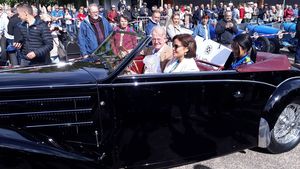
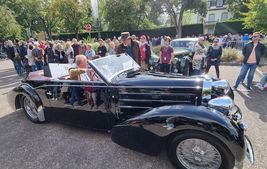

November 5, 2022 RM Sotheby's Auction Marlborough House, London, UK
|


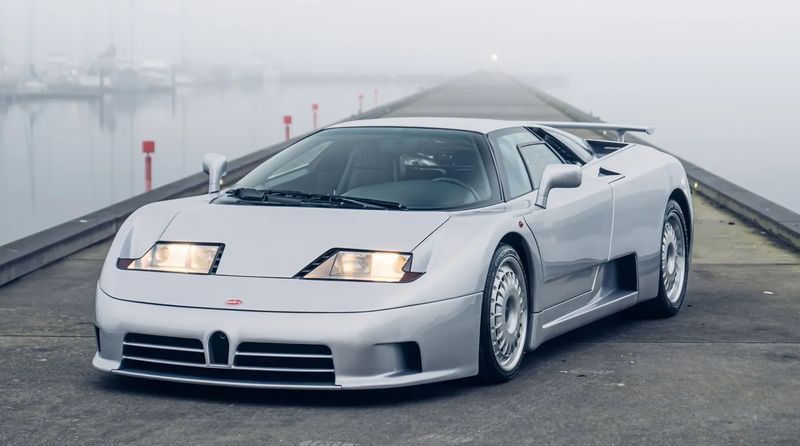
December 10, 2022 RM Sotheby's Miami auction Miami, USA
|
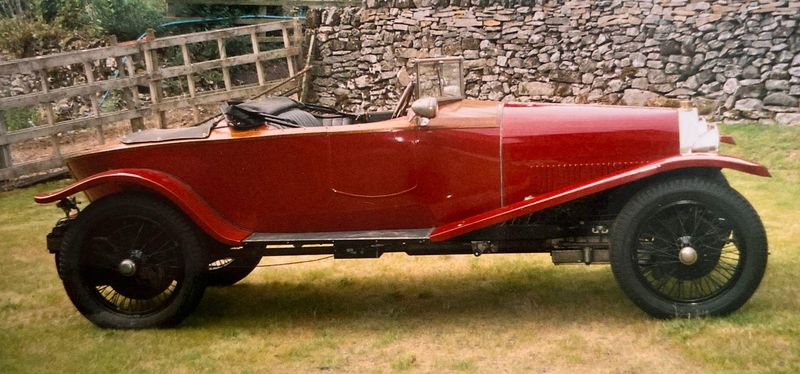
December 16, 2022 Bonhams' The Bond Street Sale London, UK

 Bugatti Type 41 Royale Fiacre Coupé, by Francois Vanaret:
Bugatti Type 41 Royale Fiacre Coupé, by Francois Vanaret:
I tried to respect this creation of Ettore Bugatti of which we only know one photo.
Right: Drawing of the Royale Fiacre Limousine by Paul Kestler, and published in his books "Evolution d'un Style" and "La Reve Magnifique".

|
September 6, 2022 Worldwide Auctioneers, the Auburn auction Auburn, USA, September 1-3, 2022
Gooding & Co. London auction UK, September 3, 2022
|





|
September 6, 2022
At Bugatti, they work night and day to develop a brand new model that will take over from the Bugatti Chiron. So far, the Alsace-based manufacturer has not revealed any information about its new product. Autocar's English journalists still managed to get an interview with its creators who briefly discussed its design.
New design, new engine The descendant of the Bugatti Chiron will have a "different" design, "more athletic", and will be "more amazing" than the Mistral unveiled at Monterey Car Week. "It will be amazing, proportionally, technologically, in terms of innovation, in terms of the unexpected. People will be amazed by it, and it's a real joy to work on this project," said Frank Heyl, director Bugatti design assistant
A less divisive interior The development of this new model would already be finished. According to rumors, Bugatti is already showing it to its customers in order to sell all or part of the stock before its presentation to the public scheduled for 2024. The Bugatti Chiron is produced in 500 copies, and it has lasted several years before the hypercar went out of stock. The new Bugatti could follow in the footsteps of its elder, it will undoubtedly be sold for several million euros. As a reminder, the Bugatti Mistral was sold at 5 million euros per unit. Top Photo: the elephant inside the gear lever of the Mistral
|

|
August 22, 2022 Gooding & Co. Pebble Beach auction, August 20 - 21, 2022
|



|
August 20, 2022 Bonhams' Quail Lodge auction, USA, August 19, 2022
RM-Sotheby's Monterey Auction California, USA, August 19-20, 2022
|

|
August 17, 2022 The above teaser was recently released, showing not much more than a headlight, consisting of vertical stripes of light. Together with this the date 19 August 2022, a time, and the location: The Quail, a motorsports gathering.
What it will be? Maybe just a new version of the Chiron? A hybrid? Or something completely different like a saloon?..... |
|
August 10, 2022 Now that Bugatti is partly in the hands of the electric automobile specialist Rimac, it is an open secret that the successor to the Chiron, well, will be electric. With a new video, Bugatti seems to be officially announcing the end of its mythical 8-litre quad-turbo W16 that has broken record after record since 2005. Will Bugatti retire her W16 without one last swan song? The chance seems small to us. Which makes us secretly assume that Bugatti will make another crazy creation with that gigantic engine in the back. Perhaps a vehicle that can break the mythical limit of 500 km/h? Because with the Chiron Super Sport 300+, the French brand previously managed to reach 490,484 km/h. Ten extra km, it would make a great parting gift for the 8-litre W16. Anyway, the end is in sight. At Bugatti, they also realize that the end is near. Which makes it seem that they have already started a farewell round. Not difficult, if you know that Bugatti was the only brand in the world to ever put a W16 into series production. The French brand now shows in a delightful short video how that feat is put together. Definitely worth watching! |


|
August 10, 2022 Apparently, the last of the Bugatti Chiron Super Sport 300+ cars were delivered, a car that reached a record speed just short of 500 kmh, at 300 mph, with Andy Wallace at the wheel.
|




|
July 25, 2022 Catawiki Auction, Internet - Italy, July 17, 2022
|

|
July 19, 2022 Catawiki Auction, Internet - Belgium, July 17, 2022
|

|
June 28, 2022 Proxibid / Henderson Auction, USA, June 25, 2022
Aguttes Auction, France, June 26, 2022
|


|
June 25, 2022 During the coming months there is a record number of 20 (correction: 21) Bugattis that will be on auction, so it's time to see what savings you have! All auctions are listed on the Events part of this page ! The list of Bugattis, to be auctioned in several countries worldwide, is the following:
|

|
June 5, 2022 As some of you may have noted, there is a "Donate" button at the very end of this page. It has been there for about 15 years, maybe more, and until last week I never received a donation. Then, an Italian collector sent me an e-mail with a very detailed question, but also with the remark that he liked my website so much, and appreciated my work that he wanted to make a donation.
Thus, I told him where the button could be found, and he sent me a donation, and a substantial one I must say, Thanks!
|

November 7 - 18, 2022 Gooding & Company geared online Auction Online

October 29, 2022 Henderson Motor Series Auction Barber Vintage Motorsports Museum in Birmingham, AL, USA




|
More info
It was one of the most adored vehicles upon its release. This 1937 Bugatti Type 57C Roadster was one of 20 built in collaboration between Bugatti and Vanvooren. It wasn’t just a topless version of the original, it was given an engine upgrade for race-worthy driving. This ’37 Bugatti featured a 3.3-liter supercharged straight-eight engine that produced 175 horsepower, enough power for a top speed of 120mph. While that may not even compete with today’s cars, it This particular piece is an older restoration which has held up beautifully, and features a spare mounted trunk, ostrich inserts, Jaeger gauges, original straight-eight engine, turned metal valve covers and firewall, and wire wheels with knockoffs. This vehicle was completely and correctly restored by Competition Motors in New Hampshire several years ago and was invited and accepted to the prestigious Pebble Beach Concours D’Elegance. While it did not win in its class, it was still appreciated and admired by the judges, participants and attendees.
|






October 9, 2022 Bonhams Auction, The Zoute Sale Belgium
Introduced in 1922, the Type 30 has a special place in Bugatti's history, for it was the company's first straight-eight engine to go into production and the first to use Bugatti's classic single-overhead-cam cylinder head, making it one of the most famous automobile engines of all time. With a capacity of 1,991cc, with three valves per cylinder operated by the single gear-driven overhead camshaft and breathing via twin Solex carburettors, this beautiful engine produced approximately l00bhp at 4,500rpm. Coming from a family of artists, Ettore Bugatti - 'Le Patron' - was renowned for his exquisite designs and the new eight-cylinder engine was no exception. This beautiful new power unit was installed in what was essentially a lengthened Brescia chassis, resulting in a touring car that was notably fast and powerful for its day, and that possessed many of the characteristics of the famous racing Bugattis. The eight-cylinder engine was very flexible and, once mastered, the Brescia-type gearbox a delight to use. Of some 600-or-so Type 30s produced, fewer than 50 cars are known to survive today, with original examples possessing known history especially desirable. In 1924 this Type 30, with chassis number '4224', was delivered new in Barcelona, Spain to the official Bugatti agent Bertrand & Serra. There it received a three-seater torpedo body designed and built by the noted pre-war firm of Casimiro Solá, also from Barcelona. Sold new to Mrs Felisa Florensia Boixades, '4224' was often seen in the streets of Barcelona before the Civil War (1936-1939). During the hostilities, the car was carefully hidden for three years until it was recovered at the war's end. Mrs Boixades was still driving it on the streets of Barcelona in 1943. After more than 30 years of ownership, Mrs Boixades sold the Bugatti in the late 1950s to Mr Martinez, owner of Platerias Martinez, a jewellery store in Barcelona. By 1962 the car had been acquired by Mr Carlos del Val, a recognised Spanish collector, enthusiast and sportsman who, among his racing adventures, raced the London-Mexico Rally in 1970 and the famous Paris-Dakar rally in the 1980s driving a Pegaso truck. Mr Del Val removed the original torpedo body and replaced it with a shorter two-seat body, emulating the legendary Type 35. Fortunately, he took some photographs of the original coachwork before the car was re-bodied (copies available). Mr Del Val would own the Bugatti for more than 50 years, driving it in various rallies and events, including the 1976 Monte Carlo Rally, the first time that the car had left Spain. In 2013 and at the age of 82, Mr Del Val sold his much-loved Bugatti to the current owners. Two brothers, the new custodians re-commissioned the car to full working order and had a new body built from the scuttle back retaining the original bonnet, based on period photographs, exactly reproducing the original three-seat torpedo body. Today this exceptional and rare Bugatti still retains all its original mechanical components, including engine, chassis, gearbox, steering, axles and also the bonnet. It is fully operational and comes with the original Spanish licence plate from 1924 and a FIVA passport (Class A3). The car has given great satisfaction to its current owners, participating in events such as an informal Sicilian rally in the heat of the 2014 summer; the 2015 Flying Scotsman Rally; and the 2016 Mille Miglia, which it successfully completed. During these events the car never failed to attract considerable complimentary attention from organisers and participants alike. Today, this wonderful Bugatti represents a unique opportunity to own a highly original Type 30 with excellent provenance.
|

October 16, 2022 Artcurial Auction, Automobiles sur les Champs France
In the late 1920s and early 1930s, Ettore Bugatti established an unrivalled reputation by winning the most important races thanks to his cars' unbeatable performance. The greatest racing drivers drove these 'thoroughbred cars', as the advertising then referred to them, cars like the Type 35, which became the most successful car in racing history. It first appeared at the ACF Grand Prix at Lyon-Givors in 1924. With its in-line 8-cylinder 2-litre engine, with five main bearings using ball bearings, a new lubrication system compared with the Type 30 engine on which it was based, lightweight body, leaf springs and cast alloy wheels, it was the epitome of the sports car. Highly sought-after today, original examples - if you can find one - sell for 3-5 million, depending on their racing history. Lacking the means to buy a real one, it was only natural for Jorge Anadon, an Argentinian enthusiast, to create his own replica by making each part himself, as in period. Given the enthusiasm it met with, he decided to build more cars and sell them under the 'Pur Sang' name. The car on offer is fitted with the Type 35B supercharged 2.3L engine, rebuilt to period specification. It was imported by a delegate of the FFVE who kept it for some 15 years and took part in numerous Bugatti rallies. Its second owner kept it for about 10 years, deriving just as much pleasure from his powerful thoroughbred. All these years of rallies and historic races have given the 35B an exceptional patina, built up over time and many miles. It looks as if it has just finished a race in the 1930s, so authentic and unrestored is its bodywork. There is a world of difference between a recent Pur Sang and this car, which oozes originality with its unrestored leather. In addition, it has just been given a full service, and the tyres, fluids and some of the hoses have been replaced. The engine has also been optimised, with changes to the carburettor jets and spark plugs; the ignition system has been overhauled and the clutch adjusted. The car has really impressive performance and is ready to compete in many historic rallies. Supplied with its French title as a Bugatti 35T, this racer will give its next owner some wonderful thrills and, above all, let them enjoy the most famous pre-war sports car, for 10% of the price of a real one, which is virtually impossible to find!
|

September 15 - October 15, 2022 Exposition in the Chartreuse - Fondation Bugatti Molsheim, France
| Ettore Bugatti - His family and his friends |

September 22 - 24, 2022 RM Sotheby's auction USA
The GENE PONDER COLLECTION; Offered entirely wothout reserve
|



|
More info The "Pur Sang" sculture by Stanley Wanlass does not show in the above search
|


 September 15 - 18, 2022 39th Festival Bugatti Molsheim, France
The Molsheim Festival is one of few (or the only one?) where any enthousiast can go and see a lot of Bugatti's, walk around inbetween them and get to know fellow Bugattistes! For registration and info, contact Michel Weber: + 33 (0) 609 478 455 - michel.weber33@sfr.fr See you in Molsheim!
|


|
Until September, 2022 All seven Bugatti's Type 101 on display at the Schlumpf museum
Mulhouse, France For the first time ever, all 7 type 101 Bugattis are gathered together, and will remain on public display at the Musée National de l'Automobile, collection Schlumpf until the Bugatti Festival in September. The occasion is a book on the subject of the type 101. |

September 1-3, 2022 Worldwide Auctioneers, the Auburn auction Auburn, USA
|




|
More info
|

September 3, 2022 Gooding & Co. London auction UK
|





|
More info
|

September 9, 2022 RM Sotheby's St. Moritz Auction St. Moritz, Switzerland
|





|
More info
|

|
June 5, 2022 Christie's Live Auction 21065 - DESIGN France, May 25, 2022
|

 May 22, 2022
May 22, 2022 After Ettore Bugatti's watch, more precisely the one which he left for his son Michel from his 2nd marriage, having been auctioned just over a year ago, now Jean Bugatti's watch is offered in an auction to be held on June 12. This "MIDO FOR BUGATTI" watch has the No. 200.775, which places it in the first series of 54 pieces with serial numbers 200736-200789 inclusive, produced in 1925-26. The announcement however does not give any details as to why this particular watch should be the one personally used by Jean, especially as another watch, with number 307215 was also claimed to be that of Jean.... One wonders if this particular watch will attain the same incredible price of €280,700 as the one sold last year!
MIDO FOR BUGATTI
|


|
April 4, 2022
Zagreb / Berlin 30-3-2022 As two of the world’s most renowned hypercar manufacturers embark on an all-new era under the Bugatti Rimac joint company, a new innovation hub in Berlin expands its European footprint. Focused on the design and engineering of future Bugatti Rimac technologies and products, the Berlin-based team will work hand-in-hand with colleagues at the Bugatti Rimac HQ in Zagreb, overseen by newly-announced Bugatti Rimac Design Director, Achim Anscheidt, and Bugatti Rimac CTO, Emilio Scervo. While the Headquarters of Bugatti Rimac remain in Zagreb with the majority of employees and future expansion building-up in Croatia, this new Berlin hub operates under a new German subsidiary company, Bugatti Rimac GmbH. It houses not only design and engineering teams, but also other Bugatti Rimac functions, including Procurement, Finance, Program Management, IT, Legal and Marketing that work hand-in-hand with their colleagues in Croatia and in Molsheim. It is very deliberately chosen as one of the most vibrant, creative and innovative areas of Germany. For decades, Berlin has thrived as a city that nurtures start-ups and rewards outlandish ideas. To this day, it remains an epicenter for artists and designers, as well as technology start-up businesses and incubators. It is the ideal platform from which to nurture the new engineering and visual identity of future Bugatti and Rimac vehicles under Bugatti Rimac. The Group’s global headquarters is located near Zagreb, Croatia, and will transition to the brand-new, €200M, 100,000 m2 Rimac Campus. Bugatti will maintain its production facilities in Molsheim, France, where it will continue to manufacture its cutting-edge hypercars. To forge the next chapter of automotive history as a multinational company, Bugatti Rimac combines Rimac’s unique agility, in-house technical expertise and innovative drive with Bugatti’s expansive heritage, engineering excellence and unique design will create the next generation of sector-defining hypercars. Together, Achim Anscheidt, Chief Designer and Emilio Scervo, CTO of Bugatti Rimac, will assemble the kind of forward-thinking minds necessary to develop the future of the world’s leading hypercar business. Positions are already available for Concept Chief Engineer, Head of High-Voltage Systems and Components, Head of Fine Mechanics, as well as design roles with specific focus on interior, exterior and VR. Adriano Mudri, previously Director of Design of Rimac Automobili, is becoming the Director of Design of a future mobility-focused sister company to Rimac, developing next-generation vehicles that will be revealed at a later point. Mate Rimac, CEO at Bugatti Rimac, said: “Bugatti Rimac GmbH is an exciting new expansion of the business. This new subsidiary will be deeply involved in many exciting hypercar projects that we are very much looking forward to sharing with the world. Our team is expanding day by day, and Bugatti Rimac GmbH represents an opportunity for the very best in the industry to join us, demonstrate their skills, and be part of a company that’s re-defining the hypercar.” Achim Anscheidt, Design Director at Bugatti Rimac, said: “From the inception of the Veyron to the end of the Chiron era, this legacy will mark one chapter of the Bugatti story but now we are preparing for an all-new era with Bugatti Rimac. With the opening of our new Berlin office, we’re preparing to evolve this story towards new innovative horizons, with a fresh design direction that reflects the cutting-edge electrification technology pioneered by Rimac Group. It is of utmost importance for us to preserve the stylistic DNA of a Bugatti, however our characterizing design identity continues to be authenticated by the means of form following performance. With new electrified technologies, our design focus will change by necessity, ushering in a proportion perfectly honed to both the excitement of the combustion engine and the instantaneous power of the electric drivetrain. I am also very excited to help evolve the Rimac brand and design DNA, which, in a relatively short time, has already received global recognition.” Emilio Scervo, CTO at Bugatti Rimac, said: “The Veyron and Chiron were of the same family but now we have the opportunity to establish a new lineage as part of the Bugatti Rimac era. With the world-leading performance electrification expertise, pioneered in the Rimac Nevera, and the unrivaled combustion engine innovation of the Chiron, the possibilities for unleashing new levels of ability and performance are almost endless. Working hand in hand with Achim will enable us to deliver engineering works of art; a modern synthesis of beauty and performance, emotional engagement and engineering prowess. “Our aim is to pursue the best materials and the latest technologies, but also the finest and boldest minds, and with our new facility in Berlin we believe we have the infrastructure in place to deliver on this fascinating challenge.”
|

|
March 31, 2022 Aguttes online Auction, March 27, 2022, France
|

|
March 24, 2022 Artcurial Retromobile auction, March 18, 2022
|



Artcurial Retromobile auction (automobilia), March 19, 2022
|



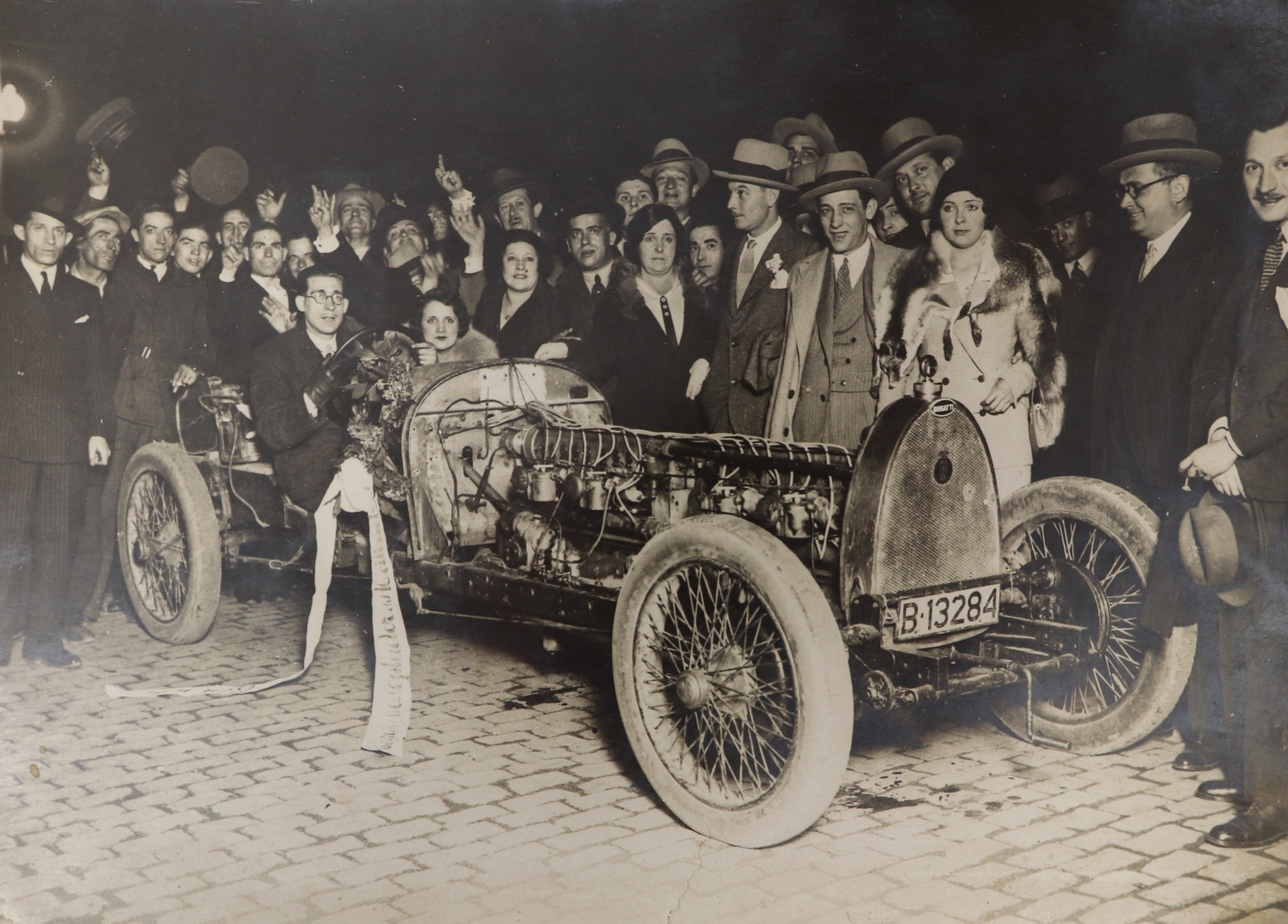
 March 19, 2022
March 19, 2022 At Retromobile I spoke with the author of a book on Bugatti's in Spain, which will be published next year. He told me that the Bugatti Type 30 with two engines as shown in the picture above (shown on my website first in October 2018), and will in fact be shown to the public next week! The Techno Classica in Essen is open from March 23 to 27. Àlex Vergés explained back then that the man at the wheel is José Tous, from Barcelona. The car is a T-30 which was registered initially to Francisco Samaranch.
|


|
March 11, 2022 Silverstone Auctions RAF Museum London Season Opener, March 6, 2022
|


|
February 3, 2022 RM Sothebys Auction Paris, France, February 2, 2022
Bonhams Auction, Les Grandes Marques du Monde au Grand Palais, Paris, France, February 3, 2022
Interesting to see that the classic Bugatti's struggle to sell, with both more expensive ones not sold. The EB110GT's though fetch prices which up to recently were for EB110SS's, when the GT's from Artioli's era until not too long ago were in the million Euro range... |

|
January 26, 2022 Mate Rimac: Next Bugatti to be powered by an internal combustion engine...
It's over, there are no more Bugattis for sale.... The French manufacturer, like other prestige car manufacturers, had an exceptional year in 2021 in terms of sales. By doing so, there are technically no more new Bugattis for sale. It's over for the story of the Chiron and its extended range. The French manufacturer has announced the sale of the last copies. Bugatti acted quickly since, on October 26, it was announced that there were 40 copies left for sale. In the space of a few weeks, these 40 cars, whose unit base price exceeds 4 million dollars, have found takers. With this announcement, the total number of units sold in 2021 is therefore 150, an absolute record for Bugatti of the modern era. Bugatti maintains that, of this number, there are 63% of first buyers of a car from the brand. At the same time, for the well-known people of the Molsheim company, the 40 Bolides unveiled just last August as part of the “The Quail” festivities on the sidelines of Pebble Beach are all sold as well. It must be remembered that individuals who have the opportunity to get their hands on the Bolide must already own a Chiron. The “general public” did not have access to it. To date, deliveries of the Divo have been completed. The “La Voiture Noire”, a one-of-a-kind automobile priced at US$18.7 million, has found its owner. The manufacturer is now concentrating on assembling the Super Sport 300+ with some 60 examples, all of which have also been sold. Subsequently, it will be the turn of the Centodieci in 10 copies to go through the Bugatti workshops. At the same time, we expect to see Bolides emerge from time to time for impatient customers. Bugatti will therefore still be busy over the next few years with vehicles whose technical characteristics are often unique from one car to another. As an indication, Bugatti is proud to have delivered 80 examples to its customers in 2021. On the count, all production based on the Chiron is limited to 500 cars. With an absence of models for sale, Bugatti is now looking to the future and, most importantly, to its merger with Croatian electric hypercar manufacturer, Rimac. After the Chiron and its derivatives, we will no longer speak strictly of Bugatti, but of Bugatti Rimac as a single manufacturer. The new boss, Mate Rimac, is more than confident about the fate of this prestigious company: “We will surprise you, especially with features never seen on other cars, and we will push even further in the direction of combustion engines. The quality and personality of the Bugatti brand will remain intact, faithful to its origins, but geared towards growth. It is Bugatti Rimac's commitment and mine to keep this promise, which is non-negotiable. Bugatti's mastery will be continued and we also intend to improve it. I also promise, as a lover of cars, technology and engines, to seek only the best, something that can inspire new generations." Mate Rimac, CEO of Bugatti-Rimac As an enthusiast and aware of the stakes, the 33-year-old has promised that the new hypercar will not be a rebadged Rimac Nevera. Nor will it be a deep restyling of the Chiron, nor a hybrid version of said hypercar. Obviously, Bugatti Rimac has some surprises in store for us in the future. Recent history shows us that this manufacturer plays in its own league when it comes to performance and exclusivity. We will soon see a whole new chapter written on the most prestigious of automobile brands. |

August 19, 2022 Bonhams' Quail Lodge auction Auburn, USA
1938 Bugatti Type 57C Atalante Gangloff Chassis no. 57767
|



|
More info

THE BUGATTI TYPE 73 Ettore Bugatti's death on 21st August 1947 - his son Jean having perished in a testing accident in 1939 - effectively signaled the beginning of the end for the original Bugatti firm. By the early 1930s Ettore Bugatti had established an unrivalled reputation for building cars with outstanding performance on road or track; the world's greatest racing drivers enjoying countless successes aboard the Molsheim factory's products and often choosing them for their everyday transport. And although the coming of World War 2 would see the Molsheim factory reduced to ruins, it did not stop work on the development of new models, one of which - a supercharged four-cylinder - had been hinted at by Jean Bugatti in 1939. That car was the Type 73, a 1½-liter model to be built in a variety of forms for both road and track use.
In a letter dated 27 September 1945 to Laurence Pomeroy, the editor of The Motor, Monsieur R.A. Bouchard of the Bugatti Company in Paris advised that the racing chassis was to be of ultra-low build, being derived from that of the pre-war 4.7-liter Type 59/50 B racing car, whilst its engine was to feature all-alloy construction with detachable wet cylinder liners and a five-bearing crankshaft. Transmission was to be by a four speed all synchromesh gearbox, and the car's total weight was not to exceed 600kg. At a price of 500,000 French francs each, five were to be delivered in April 1946, with five more during each of the next three months. Already fifteen French racing drivers had each lodged deposits of 25,000 francs, and English readers of The Motor were invited to order the remaining five planned, though this ambition would prove impossible to fulfil in the difficult economic conditions of the immediately post-war years. Nevertheless, production got under way at the old La Licorne factory in Levallois, Paris, the Molsheim site being still unusable. At the 1947 Paris Motor Show, held at the Grand Palais in October, an engine-less Type 73 chassis was displayed together with examples of both the single-cam and twin-cam engine. Eventually a batch of five complete sets of parts for the Type 73C racing model was produced, whilst an artist's impression of a planned aerodynamic sports saloon appeared in several Continental motor magazines.
THE MOTORCAR OFFERED
Offered from a Texas-based collection where the car has been stored in climate-controlled warehouse for the past 16 years, the Type 73C Bugatti was in truth a factory prototype model which fortune dictated that it was never to show its true potential in period motor racing, yet it does have one claim to fame which it will retain for all time. It was the very last racing car designed by perhaps the greatest and certainly the most successful racing car designer of all time - Ettore Bugatti.
|

August 19-20, 2022 RM-Sotheby's Monterey Auction California, USA

August 20 - 21, 2022 Gooding & Co. Pebble Beach auction USA
|
More info 1937 Bugatti Type 57C Ventoux, Chassis 57517, Engine 7C

|





|
More info 1937 Bugatti Type 57SC Atalante, Chassis 57523, Engine 23S

n the 20-year period between the two world wars, the eccentric Ettore Bugatti, working together with his brilliant son Jean, elevated automotive production from the utilitarian work of engineers to a genuine artistic pursuit. Each jewel-like Bugatti bears the unmistakable imprimatur of its maker and possesses the qualities that one hopes to find in any automobile: inspired styling, superior engineering, quality craftsmanship, and thoroughbred performance. The pinnacle of Bugatti production was the Type 57S, a model that emerged in 1936 as a more sporting version of the Type 57. With its “S” designation standing for surbaissé, or lowered, this radical new Bugatti took inspiration from the Type 59 Grand Prix and was developed as an uncompromising highperformance machine – lighter, faster, and more technically advanced than the already superb Type 57.
The front suspension of the 57S was also quite clever, utilizing a semi-independent configuration of a two-piece hollow axle held within a central knurled collar. This unconventional front axle worked in unison with complex de Ram shock absorbers, which, through a combination of hydraulic pressure and multi-plate discs, provided immediate and effective damping. When this technology first appeared in the 1930s, a single de Ram shock absorber cost about the same as an entry-level automobile. For this new chassis, Bugatti thoroughly revised its 3.3-liter twin-cam straighteight engine utilizing many techniques of the Grand Prix car. A sophisticated dry sump lubrication system allowed the engine to be mounted lower in the chassis and ensured steady oil supply during hard cornering. High compression pistons and careful tuning resulted in a gain of 20–25 hp over the Type 57, while a high-performance Scintilla Vertex magneto replaced the conventional distributor of the standard model. A lightweight exhaust system was designed to suit the car’s sporting character and it terminated in a most unusual manner, in a row of five small-diameter tailpipes. In normally aspirated form, the Type 57S offered exceptional performance, while the supercharged “C” variant, producing about 200 hp, was among the fastest production cars built before WWII.
The Bugatti Type 57S was one of the ultimate high-performance automobiles of its era, and its competition variant, the Type 57G Tank, was further proof of concept, with two wins at the 24 Hours of Le Mans and several international speed records to its credit. The 57S’ outstanding performance attracted an elite clientele – a “who’s who” of 1930s motoring royalty. In total, Bugatti built just 42 examples of the Type 57S between 1936 and 1938. Like the standard Type 57, the surbaissé model could be purchased as a bare chassis and supplied to outside coachbuilders like Vanvooren, Gangloff, and Corsica. The most famous examples, however, were those outfitted with bodies designed by Jean Bugatti and built at Molsheim. In this category are the incomparable Atalante and Atlantic, widely regarded as two of the most attractive, influential, and recognizable automotive designs of all time. Just 17 Type 57S chassis were originally supplied with Atalante coachwork, a mesmerizing design named for the legendary heroine of Arcadian mythology.
Though it was a catalogued body style, no two 57S Atalantes are alike, each differing in subtle details. This Atalante possesses several unique characteristics – most recognizably its large Scintilla headlamps, which imbue the car with an elegant, dreamy-eyed appearance. These remarkable lights, combined with the fully skirted rear fenders and beautifully sculpted tail, make this a particularly appealing and distinctive Atalante. As completed, 57523 was finished in a splendid monochromatic black color scheme and delivered to the official Bugatti agent in Paris, on Avenue de Montaigne. In May 1937, the Atalante was sold to its first owner, Alphonse Gandon, a successful wine and liquor merchant. An archetypal 57S owner, M. Gandon had owned at least one other Bugatti prior to his acquisition of 57523, a Figoni-bodied Type 55 Roadster with which Jacques Dupuy won the 1933 Paris-Nice race. A connoisseur who certainly appreciated artful design in all aspects of life, M. Gandon’s home was built in the Art Deco style and situated at the edge of a forest in Saint-Germain-en-Laye.
In September 1940, the Bugatti was registered under the name of Gaston Polonois; however, in April 1946, it was re-registered to Alphonse Gandon’s son Marcel. Though nothing further is known of the circumstances, it is possible that M. Gandon owned the Bugatti throughout this entire period and merely had the car re-registered to protect it – or perhaps himself – during the war years.
Around 1959, chassis 57523 was sold to Jean De Dobbeleer of Brussels, Belgium. In the years following WWII, De Dobbeleer was Europe’s foremost Bugatti dealer. He bought, sold, and restored innumerable cars, including some of the most significant examples of the marque and several exotic 57S models. Soon after De Dobbeleer’s acquisition, 57523 was sold to well-known Bugattiste Gene Cesari, a man many consider among the most important contributors to America’s rich appreciation for the Bugatti marque. An academic, racer, and gentleman farmer, Mr. Cesari had been involved with Bugattis since 1953 and, in 1958, was even appointed as the firm’s official North American agent by Bugatti Automobiles’ Director General M. de Made. Around 1960, Mr. Cesari sold 57523 to George W. Huguely Jr. of Annapolis, Maryland. During this period, Mr. Huguely quietly assembled an impressive stable of important motorcars that included a Bugatti 57C Gangloff Cabriolet, two supercharged Mercedes-Benz cars, three Duesenbergs, and three Touring-bodied 8C Alfa Romeos – a long-chassis 2.3 Le Mans Tourer, a short-chassis 2.9 Spider, and the Mille Miglia-winning 2.9 Berlinetta.
Dr. Vesley eventually sold the Bugatti to Ed Lucas of Troy, Michigan, who, in turn, sold it to noted collector William Jacobs. In 1990, the Blackhawk Collection acquired 57523 and restored it in a two-tone, black and red color scheme. In 2005, well-known California-based collector Ray Scherr was presented with the opportunity to acquire the Atalante as well as its original, matching-numbers engine. The engine, which had been repaired and subsequently installed in another Bugatti, was reunited with 57523 following a complex negotiation. Mr. Scherr then entrusted the Bugatti to Bob Mosier, a respected restorer specializing in important antiques and classics. Over the next three years, Mr. Mosier completely restored this important Bugatti in a no-expense-spared manner, with great sensitivity to its originality. Chassis 57523 made its post-restoration debut at the 2009 Pebble Beach Concours d’Elegance®, where it earned both First in Class and the prestigious French Cup, a special award presented to the most significant car of French origin. From there, it went on to capture Best in Class at the 2010 Amelia Island Concours d’Elegance and back-to-back Best of Show awards at the Santa Barbara and Avila Beach concours. Later repainted in its original black livery, the Bugatti was sold at the 2013 Gooding & Company Pebble Beach Auction to a private European collector. During his ownership, the Atalante was shown just once at the Concorso d’Eleganza Villa d’Este in April 2016. The current owner, a discerning American collector, acquired 57523 in 2019, again with the assistance of Gooding & Company, and had it sent to highly regarded Bugatti specialist Ivan Dutton Limited in Aylesbury, England, for mechanical sorting. Having restored another Type 57S Atalante, Tim Dutton was uniquely qualified to carry out a comprehensive mechanical restoration on 57523, with the goal of making it perform as Bugatti intended. Invoices on file confirm that this project included a full rebuild of the engine and rear end, as well as a complete chassis overhaul, with great attention paid to suspension set up. At the same time, the car’s original gearbox was located, rebuilt, and reunited with the chassis, and a set of new Borrani wire wheels were fitted in preparation for high-speed touring. As this work was carried out, 57523 was inspected by English Bugatti historian Mark Morris. His report, included in the car’s file, confirms that this Atalante is one of just four Type 57S chassis with a factory-supplied supercharger and retains important matching-numbers components including the frame, body, engine, gearbox, differential, as well as the original chassis plate. Furthermore, the engine is stamped in several locations with the factory assembly no. 25, indicating that it retains its original crankcase, sump, camboxes, and cam tower drive. As the culmination and zenith of Bugatti production, the Type 57S is universally acclaimed as an automotive masterpiece. It stands among the most important Bugatti automobiles ever built; for over 60 years, collectors have regarded these precious few low-chassis Type 57s as the finest prewar motorcars. With its advanced specification, exceptional performance, and spectacular Jean Bugatti-designed coachwork, the 57S truly embodies the spirit of the Bugatti marque, Le Pur-Sang des Automobiles. Of the 17 Atalantes built on the Type 57S chassis, it is important to note that only two were fitted with superchargers by the Bugatti factory, another two have been irretrievably lost, and four reside as permanent fixtures in the Musée National de L’Automobile in Mulhouse, France. The remaining examples are held in the world’s finest automobile collections and are not likely to trade hands in the foreseeable future. In every respect, 57523 is a true mechanical objet d’art – an exclusive and sporting Bugatti of unrivaled beauty, rarity, and sophistication, whose unquestioned authenticity, expert restoration, and magnetic presence place it among the top-tier of collectible automobiles.
|

Vintage ladies enjoying a Bugatti
Unknown photographer - unknown location - unknown ladies
Unknown Bugatti, must be Type 46, or perhaps Type 50
From: www.vintag.es/2020/08/vintage-ladies-with-cars.html, provided by John Hempel

July 3, 2022 Alexandre Landre Auction France
|

July 16 - 17, 2022 100 years commemoration of Grand Prix de l'ACF, Strasbourg Duppigheim, France
|

July 17, 2022 Catawiki Auction Internet - Belgium
A very nice Bugatti Type 35 B Supercharged built by Pur Sang Argentina. Maintenance condition: The engine runs well, the gearbox shifts well and the brakes work well. The car drives properly and is technically in a well-maintained condition. Paintwork condition: Paintwork is in very good condition, has normal signs of wear. Is its original paint, French Racing blue. It is in very good condition for its age. Interior condition: The interior is in very good condition, made of brown leather. All original clocks are present. Also equipped with an aluminum dashboard. Options: Pur Sang is named one of the best car builders in the world! 1 on 1 with the original T35 built by Bugatti in Molsheim, France. There are "only a few minor" differences between the original and a Pur Sang. For example, the Pur Sang is equipped with a modern ignition that looks like a magneto ignition, it has an electric cooling fan, the Pur Sang has other bearings for the crankshaft, so that the engine does not need an overhaul every ten thousand kilometers and the Pur Sang has another firing order that better suits the inline 8 engine. This Bugatti Type 35 B Pur Sang was built to order in Argentina, completely to the wishes of the buyer. This Pur Sang has a Belgian registration from 1927, the car is also supplied with this.
|

July 25, 2022 Catawiki Auction Internet - Italy
Fitted with a beautiful sleek Ghia Torino body, the body is made of wood and pegamoid (Weyman), still perfectly preserved making it one of the most beautiful Type 44 given its exceptional condition. Regarded by Bugatti experts as the most preserved and original Bugatti and a candidate for the 'most preserved car' category in all the world's most important competitions, from 'Pebble Beach' to 'Villa d'Este'. Car in beautiful and original condition preserved and unique. A conservation restoration on the fenders was recently carried out by a major body shop, they specialize in high-end cars. Always Italian, 3 previous owners, owned by the same family for 78 years, still corresponding to the production when the car was new. The car has been featured in a number of famous magazines and featured on the cover of the very important British magazine 'The automobile'. Car equipped with 'catalogue des pieces detaches du chassis 3 liters, type 44' (catalog with prices of spare parts) and 'notice de conduite et d'entretien du chassis 3 liters type 44' (original manual and maintenance instructions from that time) , easy to read for reference. It can be viewed in the province of Bergamo, Italy. |

June 25, 2022 Proxibid / Henderson Auction Birmingham, Alabama, USA
Offered without reserve


|

June 26, 2022 Aguttes Auction France
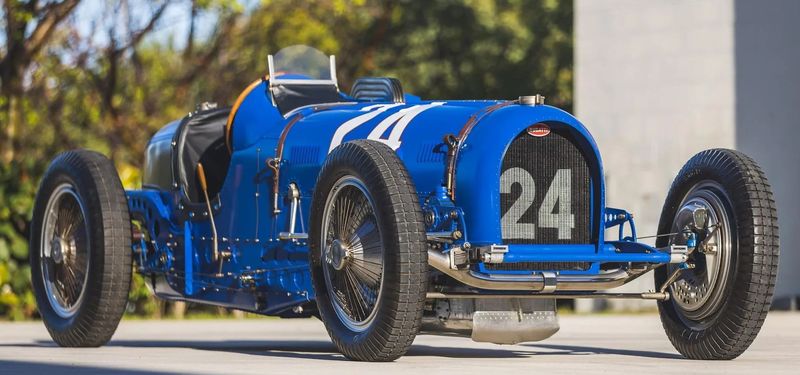
June 17, 2022 Bring A Trailer Auction USA
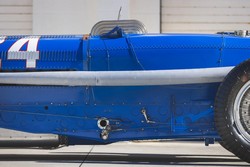
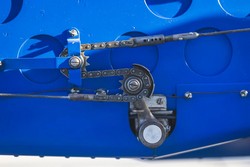
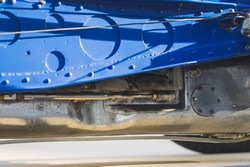
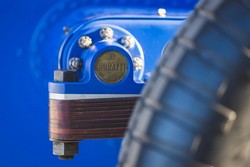
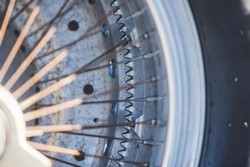
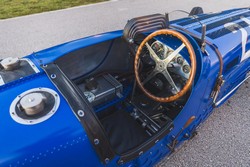
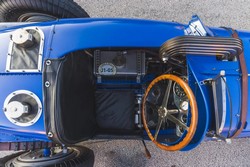
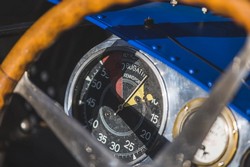
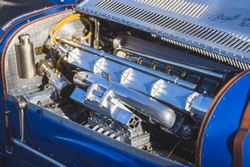
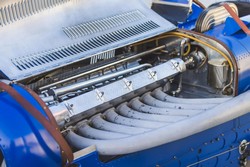
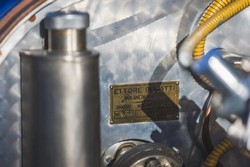
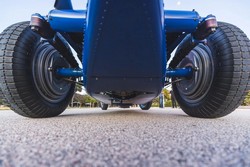 The David Sewell report. Restoration photographs. Photographs of the original car, and of Ray Jones and the parts in the factory. Various drawings included in the sale, not all of the T59. |
|
More info
|

Rembrandt Bugatti
African elephant and young camel - Sculpture in bronze

May 13, 2022 Bonhams Auction: 'LES GRANDES MARQUES a MONACO' Monte Carlo
|
1927 Bugatti T35 B: Offered from 47 years of private ownership. 





1929 Bugatti Type 37
|

May 25, 2022 Christie's Live Auction 21065 - DESIGN France

May 7 - 8, 2022 Vintage Revival Monthléry France
Vintage Revival including parts market. According to the photo (when was that?) quite some Bugatti parts for your project!

 Until April 20, 2022 Bugatti Divo on public display Molsheim, France A Bugatti Divo is on display at the center square of Molsheim, and will remain there until April 20.
|

March 27, 2022 Aguttes online Auction France

March 6, 2022 Silverstone Auctions RAF Museum London Season Opener 2022 UK

March 16-20, 2022 Retromobile 2022 Paris, France
|
Postponed several times, but now finally (hopefully) the Retromobile will take place! With usually a lot of Bugatti's, parts, miniatures, books and more.
|

March 18, 2022 Artcurial Auction, Rétromobile 2022 Paris, France








|
January 9, 2022 I am proud to announce that my 2021 Christmas card won the competition at PreWarCar, a competition I was not even aware of....
For those of you who have not received my e-mail with the card (above): It is a very nice black and white photo, from February 1916. The photograph by Jacques-Henri Lartigue of a beautiful winter wonderland is taken in Paris, in the Bois de Boulogne. It shows a man on skis behind a Bugatti-designed Peugeot Bébé. The text “Merry Christmas and a healthy and prosperous 2022!” was added by me.
|

|
January 8, 2022
At the beginning of the video, a line-up of cars is presented, with 4 shrouded cars on one side. See above and to the right. At 27 seconds into the short clip, a sort of timeline formed by cars from the Bugatti and Rimac brands appears. On the left you'll spot classic Bugatti models, namely a Type 35 race car, the Royale, and the Type 57SC Atlantic. In the center are situated modern cars from Bugatti and Rimac, namely the Veyron and Chiron from Bugatti and the Concept_One and Nevera from Rimac. To the right are four shrouded cars that Rimac describes as Bugatti Rimac collaborations due in the coming years. One appears to match the silhouette of the Bugatti Type 35, suggesting there might be a continuation model planned, possibly with electric power. There also appears to be a track model of some sort, as evidenced by the Le Mans prototype-style rear wing on one of the cars. It's possible that this model is the production Bolide track car, which Bugatti has promised for 2024. A third model appears to be a new Bugatti hypercar, as evidenced by a signature horseshoe-shaped grille at the front. It's possible this is Bugatti Rimac's planned successor for the Chiron which is due to end production around 2024. There's also a fourth model, though the video changes to a new scene before the full silhouette can be revealed. Interestingly, none of the cars appears to be a crossover, suggesting that Bugatti Rimac will stick to sports cars. When might we get a proper look at one of Bugatti Rimac's collaborations? At the 3:12 mark in the video, Rimac says something might be shown as early as this year. Don't expect the next generation of Bugattis to simply be clones of Rimac models, like Pininfarina's Battista hypercar which uses the same hardware as Rimac's Nevera. Despite partnering with a leading electric-vehicle company like Rimac, Bugatti won't abandon the internal-combustion engine just yet. Both hybrid and pure electric Bugattis are planned within this decade. Rimac, of course, will stick with EVs. |

|
January 2, 2022 Oldtimer Galerie Toffen - The Swiss Auctioneers, December 29, 2021
|

|
December 25, 2021
Henk Mooi sent me the link to the absolutely nicest Bugatti in the snow footage I ever saw! Click the link above or Here. It was made by Kidston productions, special Christmas edition! And don't forget to put on the sound!
|


|
December 8, 2021 Bonhams Auction, The Bond Street Sale, December 4, 2021
|

|
November 9, 2021 Herbette Auction October 31, 2021
Artcurial Auction, November 7, 2021
|

|
October 30, 2021 Artcurial Auction, Automobiles sur les Champs, October 24, 2021
|

|
October 12, 2021 Bonhams auction, The Zoute Sale, Belgium, October 10, 2021
The car was actually sold to a lucky guy in the Netherlands! |

|
September 24, 2021 How far can you go as an automobile manufacturer to get some additional cash? And maybe a bit of publicity? We know that car manufacturers go a long way in putting their name on the strangest products, nothing to do with automobiles, of course. But what is the connection? If there is any? Bugatti is one of those, and markets a whole lot of stuff, none of them made by themselves; clothing (probably one of few things you might actually be able to afford), furniture, impressive yachts, perfumes (do they actually, or was that just in the Artioli Era?), HiFi speakers and various other stuff I don't really care to remember. The Bugatti Billiard (pool table actually, why not Snooker?) shown above has now actually been delivered for some luxurious man cave (probably nothing close to an actual cave, I wonder if the "man" part is correct). High Tech, self-levelling, carbon-fibre and etcetera, for a price like that of a house. Now, the latest thing introduced carrying the name of our beloved marque is the thing shown below. Apparently it is designed to give you a smooth skin on your chin, and is even heated for more comfort... A brand known for shaving equipment, Gillette, is producing it, and you can get it in the same colour as your Chiron. Or maybe you can buy your Chiron to match the colour of your razor? Don't ask me where you will be able to buy it or order it on-line, but those desperate enough, will surely be able to find it! |
 September 16, 2021
September 16, 2021 A pretty Bugatti can cost a few million euros. That doesn't bother Thomas Scholz, on the contrary: He buys one sports car after the other - and realizes too late that he is being cheated in the process. The case gives insights into the sometimes crazy world of the super-rich. By Fritz Zimmermann, First published in the German newspaper "Die Zeit", August 24, 2020 Since ancient times, philosophers have discussed what it means for the identity of a ship to change each of its individual parts. In the end, is it still the same boat? And what happens when you build a second boat with the rejected parts: Which of the two boats is Theseus' ship? What's the original? And what about the copy? Rain drips from the sky when Thomas Scholz opens the front door to his property with a remote control. The door has no handle, the windows are also without handles, because of the risk of break-ins, the whole building is highly secured. What is behind the front door is too valuable, a few steps down the stairs, in a hall-sized showroom: The Type 35 Bugatti, for example, its value: around two million euros. Or the Bugatti Type 13, around one million euros. These are names that only say something to people who are very interested in old cars. Or have a lot of money. Thomas Scholz, in his early 60s, says of himself that he is "wealthy". He earned his living in the logistics industry. He doesn't want to read more about himself in the newspaper, not even his real name. Scholz is a man who is used to winning. Anonymity is a condition for him to tell the story he calls a "negative life experience". The showroom is located in a slight depression on his property, light falls through the curved glass front, a futuristic building that Scholz had built specifically for his cars. There are a total of 15 cars valued at »easily 20 million«, as Thomas Scholz says. There is also a Colani grand piano and photographic works by famous artists. And then there are the two cars in the center of the hall: the Bugatti Atlantic and the Bugatti Gangloff. He paid a good million euros for both vehicles together. They were his first vintage cars, vehicles from the 1930s. At least that's what he thought when he bought them 14 years ago. He now knows: The Bugattis were copied, they are copies. Scholz is convinced: He was betrayed. "Ripped off," as he calls it. That won't let him rest. The case of Thomas Scholz is a rare moment in which one briefly gets a glimpse into the otherwise closed world of the super-rich. Where vehicles worth millions are sold as if they were toy cars. In which old sports cars are seen as prestigious investments, they are looked upon in the same way as expensive works of art. And now a dodgy affair bursts like an uninvited guest into a dinner. It revolves around the longstanding head of the historical department at Bugatti. The man conveyed the replica classic cars to Scholz. It all started with the fastest car in the world. The Bugatti Veyron, 407 km/h top speed, 1001 hp, from 0 to 100 in 2.5 seconds. A car like from a quartet of cars (known game in Germany especially, the "trump cards"). The new price: 1.1 million euros. The Veyron was the first car Bugatti launched after Volkswagen took over the glorious brand in 1998. The company made only 300 of these. In the spring of 2006, on a sunny spring day, Thomas Scholz bought one of these vehicles. He remembers exactly how he went to Molsheim in Alsace with his wife. In 1910, Ettore Bugatti founded his automobile factory in Molsheim, and today Bugatti's headquarters are located there in a restored castle. Like all buyers, Scholz also had to pay 300,000 euros upfront for his new Veyron. Only then was he invited to the Alsatian castle for a test drive. During the journey, they were stopped by the police, fro driving much too quickly, of course. The Bugatti board member who accompanied him spoke to the police and the journey continued without penalty. Back at the factory, he chose the color and seats of his future car: his first Bugatti. Until then everything went according to plan. Scholz, who looks rather inconspicuous, sits at the table in his huge showroom and continues talking about the big day back then. The board member said goodbye after the trip and introduced them to the head of the traditional department, who should continue to look after them for the day: Julius K. He is the author of several standard works on the Marque and he is, for many, the greatest Bugatti expert today. This Julius K. showed them around the plant, they had a meal together, K. showed the couple pictures and miniatures of old cars. “I was amazed by the design,” says Scholz. Then K. said that one could even bring these old Bugattis back to life - and buy them too. You just had to have the right partner to avoid being cheated. He could establish such a contact for them. When they drive home after almost six hours, Scholz is delighted. "I thought: Wow, these are great cars." You don't get too close to Thomas Scholz if you realize that at that point in time he didn't have the faintest idea of old Bugatti cars. In poker, players who have a lot of money but little idea what they are doing are called dead money. Scholz is easy prey. Three weeks later, says Scholz, there was a second meeting at the Bugatti headquarters. In addition to Scholz and Julius K., a third man had come: Hero A., the owner of a vintage car workshop near Osnabrück. He is the contact that K. had promised. At the turn of the millennium, Hero A. ran Sunburst AG, a dot-com company that promised millions in profits by marketing the brand rights for the Love Parade and Sesame Street, and shortly afterwards went into bankruptcy in a spectacular way. It is unclear exactly how A. got into the classic car business. However, with the presence of Bugatti expert K., Scholz assumes that he can trust Hero A. They agree to buy two vintage cars that Hero A. is going to build for Thomas Scholz. Purchase price: one million euros. The draft contract has been submitted to ZEIT. Thomas Scholz, it says, commissioned A.'s company to build two Bugattis. And further: »They are replicas of the existing Bugattis of Ralf Lauren. “The Bugattis” will get an H-approval (oldtimer status) ”. "As many original Bugatti parts as possible" will be used for this. In this manner, the cars would meet the criteria of Pebble Beach. Once a year the biggest beauty contest for vintage cars takes place on the west coast of the USA, Julius K. is one of the judges there. The contract further states that K. will be available for advice and will act as an "arbitrator" in disputes. Scholz signs without hesitation. What can possibly go wrong under the supervision of Julius K.?
Norbert Schroeder laughs happily over the phone when he hears the story of Thomas Scholz' alleged Bugatti classic car. Because there is a question behind it that he has had to answer almost every day for years, and yet again and again: What exactly is it, an original classic car?
In the case of Thomas Scholz's two Bugatti oldtimers, says Schroeder, the situation is clear. The "replicas" of the Bugatti from Ralph Lauren described in the sales contract with "as many" original parts as possible are just that: replicas. They would never get an H-license plate for oldtimers from him in the TÜV, as it was promised in the contract. The orientation on the criteria of Pebble Beach is irrelevant, because it is only about the appearance of a car (This seems to be incorrect in the original article, Pebble Beach only accepts original cars, in principle), Ed.. A specialist would have recognized immediately that the contract could not be adhered to. "From today's perspective, I would not sign the contract because it is pure fraud," says Thomas Scholz. From today's perspective. Scholz describes the time after the purchase as a frenzy. He flies to autoshows in the UK and to the contest in Pebble Beach. Julius K. takes care of the admission tickets. In emails, K. offers him other vintage cars, Bugatti miniatures, books and an old Bugatti wristwatch. ZEIT has some of the e-mails. A 1:8 scale model costs 6500 euros. The watch is 159 euros. He buys the book Bugatti La Gloire for 550 euros. Julius K. wrote a dedication to him in one of his books: "You may be the only one who came to Bugatti through me." Scholz says he bought accessories for a total of around 20,000 euros, he often paid in cash, so he almost never has any receipts. "We were hungry," says Scholz. “And K. wanted to sell.” Even before the agreed cars are ready, Scholz orders three more Bugattis from Hero A.'s workshop. He seems obsessed with cars. For Scholz, however, it soon becomes clear that Bugatti can also cause problems. The two Ralph Lauren Bugattis are still not ready two years after the order was placed. The test drive is delayed several times. When the time finally came, in summer 2009, he traveled to the Black Forest to drive his cars for the first time at a Bugatti meeting. The test drive becomes a disaster. From the beginning, he recalls, the car vibrated unusually strong, and after a few kilometers a wheel came loose when braking and overtook him. Hero A. will later write to him in an email that "at no point in time" was there any danger. A few months later, Scholz had his supposed classic cars delivered anyway and placed them in his showroom. They have been there to this day, for more than ten years.
The classic car market has changed. “It's no longer just enthusiasts who are interested in cars. There are also speculators,” says Norbert Schroeder from TÜV Süd. Prices have been rising for years, and payments are often made in cash or from foreign accounts. And so the industry also becomes interesting for a third group: the fraudsters.
It is the first major investigation in Germany to pursue fraud involving vintage cars. "We are still at the very beginning in this field," said the investigating public prosecutor Jan Balthasar to the ZEIT. One of the anomalies during the investigation: Many of the owners are reluctant to be listed as victims in the proceedings. As with works of art, the value of a classic car is measured by how valuable people think it is. If the illusion is destroyed by an appraisal, the vehicle is only worth as much as the price of its individual parts. There are dozens of oldtimers, perhaps more, that are still admired at rallies, but which are little more than a pile of not-so-expensive sheet metal. Thomas Scholz says he is quite strict in this. Such people should be stopped. That's why he accepted the depreciation of his classic cars. He sued in court against Julius K. and Hero A., among others, and demanded repayment of 1.3 million euros. He never received the last three vehicles he had ordered. But the court found that Julius K.'s involvement in a "joint fraud" was not apparent.
Hero A., however, was sentenced by the judges to repay around 750,000 euros to Thomas Scholz. But Hero A.'s workshop went bankrupt. In the bankruptcy documents, Scholz found an invoice written by Julius K., the Bugatti Pope. For the "acquisition of customer Mr. Thomas Scholz", it says, K. received a fee of 20,000 euros from the company. ZEIT has the invoice. Further documents show that K. also received monthly payments from the workshop. The "arbitrator," as he was called in the contract, was bought. Scholz also turns to the Volkswagen ombudsman. Bugatti's parent company then started internal investigations, at the end of which the employment relationship with the head of the historical department Julius K. was terminated. The ZEIT would have liked to talk to Volkswagen and Bugatti about the background to Thomas Scholz's case and the involvement of their colleague Julius K. But the company declined a request for an interview from ZEIT on the subject, as did several former Bugatti top managers who were familiar with the case. Julius K. and Hero A. also do not want to comment on ZEIT's request. The industry is silent. One last phone call last week. Thomas Scholz talks about his Bugattis again. He now owns eleven. He's going to sell his collection, says Scholz suddenly. "I don't want to have anything to do with a scene like this," he says. His lifetime is too good for that. He has offered all of his Bugattis to a dealer, he only wanted to keep one. The rest is for sale. Only: what are they worth?
 The Bugatti Atlantic is one of the most expensive passenger cars in the world, when it's real....
|

|
September 14, 2021 On September 8, after a very short and sudden illness, our friend, Bugatti enthusiast and "Master of the engine rebuild" Bart Rosman died, aged 83. I got to know Bart over 2 decades ago, when I was a young Bugatti enthusiast with no Bugatti, and was admitted to the world of the Bugatti Club Nederland. Bart was one who accepted everybody with a true Bugatti interest, regardless if you owned a Bugatti or not. It was the enthusiasm that mattered. Bart was also an esteemed member of the Bugatti Aircraft Association, just because he was interested in the technology, and was present in various BAA meetings. The only time when he was less friendly, was when the subject came to replica Bugattis, of which many exist these days. He was fiercely opposed to these "look alikes"!
Bart did all of his maintenance and preparation himself; I once visited him while he was busy assembling his T35C's (roller bearing) crankshaft, a very precise operation indeed! On the top photo from a Dutch rally in 2016, Bart and his life-companion Tubien Wisse, who died in 2018. After Tubien died, we unfortunately saw him less often. Bart, we will miss your friendly and enthusiastic presence! I hope heaven will have a special place for the Bugattiste, preferably a race track!
|


|
September 7, 2021 Worldwide Auctioneers Auburn auction, September 3/4, 2021
Witnesses report that the car did not reach it's reserve during the auction, but was sold after the auction |


|
August 22, 2021 RM Sotheby's Monterey auction Monterey, August 13/14, 2021
Gooding & Co Pebble Beach auctions, August 14/15, 2021
|

March 3, 2022 Bonhams', Amelia Island Auction USA

March 4, 2022 Gooding & Company, Amelia Island Auction USA
|

March 5, 2022 RM Auctions, Amelia Island Auction Florida, USA

Wrum wrum, by Mantras gr